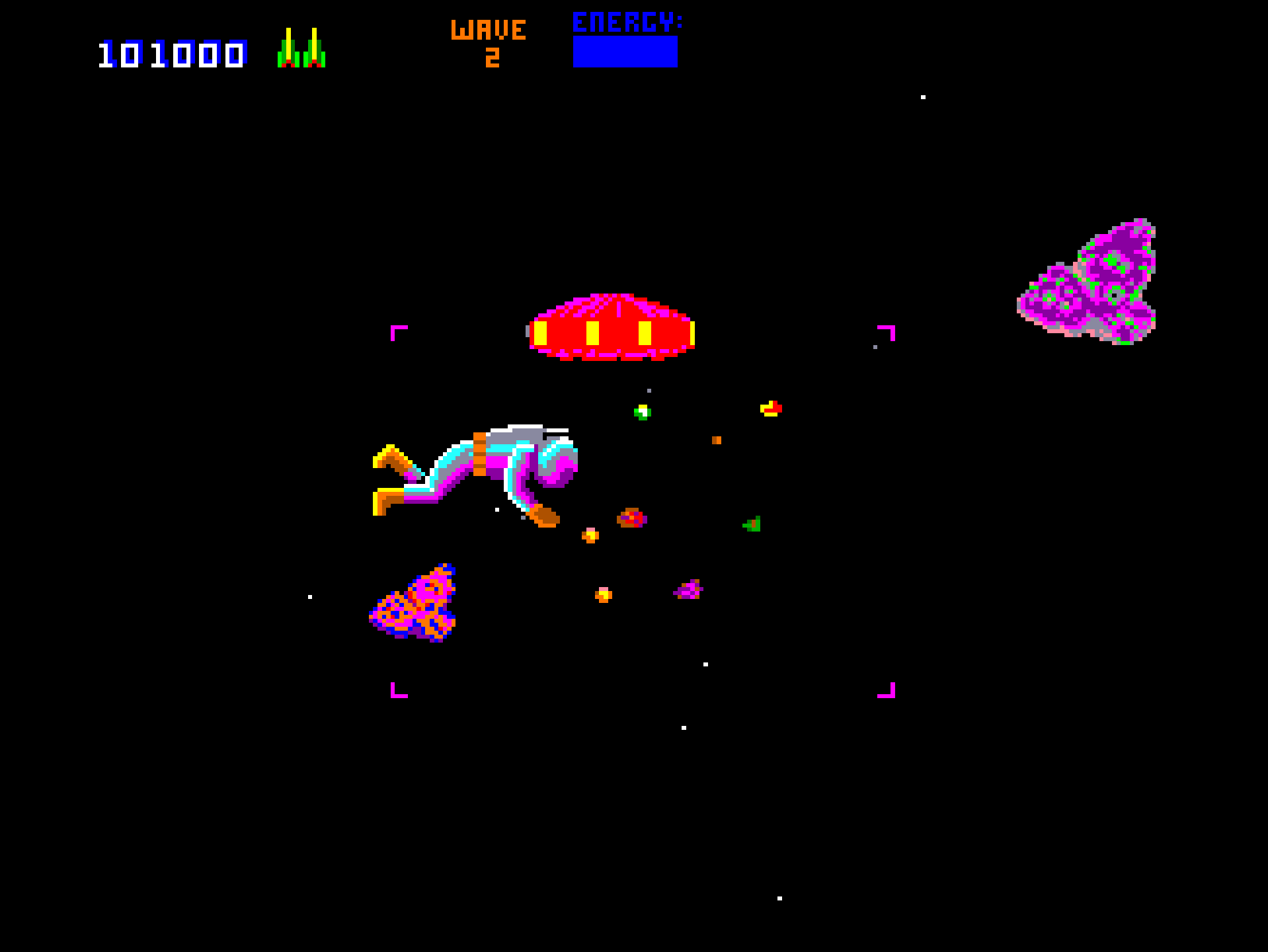Introduction
Released in 1983 by Williams Electronics, Blaster is a fast-paced first-person space shooter developed by Eugene Jarvis and Larry DeMar, the minds behind Defender and Robotron: 2084. Despite being less well-known, Blaster pushed graphical and technical boundaries of its time with 3D-like visuals, intense speed, and unique level design. It served as both a spiritual successor to Defender and a rare early example of pseudo-3D arcade shooting.

Development and History
- Developer: Vid Kidz (Eugene Jarvis & Larry DeMar)
- Publisher: Williams Electronics
- Release Date: 1983
Blaster was initially intended as the third entry in the Defender trilogy. Vid Kidz utilized scaling sprite technology to simulate 3D movement, influenced by games like Battlezone but with much faster action. The game ran on a modified Robotron board, pushing it to its performance limits. Although it didn’t reach the commercial success of its predecessors, Blaster is respected as one of the most technically ambitious Williams games.

Gameplay Video
Gameplay and Mechanics
Core Gameplay
- Perspective: First-person view flying through space toward the surface of a planet.
- Objective: Destroy enemies, rescue astronauts, and survive waves while navigating space debris.
- Controls: Joystick for movement, trigger for firing—no complex button layout like earlier Vid Kidz games.
- Speed and Reflex: The game is lightning-fast and requires split-second reactions.
Level Design and Features
- Warp Zones: Certain areas allow fast travel to bonus stages.
- Astronaut Rescue: Similar to Defender, rescuing stranded astronauts adds score bonuses.
- 3D Illusion: Uses sprite scaling and motion to simulate depth, a technical feat in 1983.
- Enemy Types: Includes mines, missiles, alien ships, and other hazards that rapidly appear in your path.

Cultural Impact and Legacy
- Underappreciated Classic: Blaster never gained the fame of Robotron or Defender but is praised by arcade historians.
- Technical Milestone: One of the earliest arcade games to successfully simulate 3D visuals at high speeds.
- Cabinet Design: Featured a sleek, futuristic cabinet with vivid artwork and a seated cockpit version.
- Later Recognition: Included in Midway Arcade Treasures and rediscovered by retro gaming fans.

Fun Facts
- Defender DNA: Early builds included working titles like Defender 3.
- Almost Lost: The game nearly disappeared due to low production numbers and limited cabinet distribution.
- Sound Design: Shared some effects with Robotron and Sinistar due to shared hardware lineage.
- Speed Records: One of the fastest Williams arcade games in terms of visual velocity.

Conclusion
Though it never reached the heights of Defender or Robotron, Blaster remains a bold and fascinating entry in Williams’ arcade lineup. Its combination of speed, pseudo-3D visuals, and intuitive controls made it ahead of its time. For fans of classic arcade innovation and Vid Kidz’s legacy, Blaster is a must-play hidden gem.

